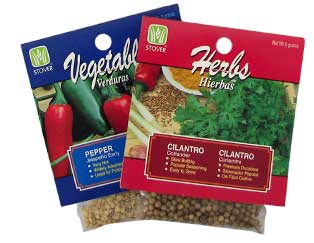Early Vegetables

Thinking of starting your garden?
If you are a gardener and love to grow vegetables, what type of garden do you have? Now is a good time to consider this topic. We’re coming off the quiet, dormant months. Of course, some gardeners are really on top of everything and already have their whole year plan done in January…but you may still be considering your vegetable garden. So, perhaps just in time, we will give you a few more things to consider, before you read on about what to be planting this part of time of year.
Companion planting is the technique of combining two plants for a particular purpose. That purpose is often pest control. Some companion plants work to hide, repel, or even trap pests. Garlic and onions release odors that deter some insects from visiting their companion vegetables, such as tomatoes or strawberries. Mint keeps cabbage loopers off cabbage; basil discourages tomato hornworms from tomatoes – plus it tastes good on your tomatoes or in the tomato sauce that you will be making later!
Other companion plants have a different role – to attract, feed, and provide shelter to beneficial insects. Beneficial insects will consume the pest insects that we want to rid gardens of (vegetable or flower gardens). Or they may lure pests away. Nasturtiums lure aphids away from vegetables (and roses for that matter) and they have the added benefit of having an edible, peppery flower.
Some plants are complementary to each other and thereby are great companions; they like being close together in small space. For example, you may plant deep-rooting squash close to shallow-rooting onions. Their roots occupy different soil levels and don’t compete.
Some plants need many soil nutrients (cabbage, corn, eggplant, and squash). These can be combined with light feeders such as garlic and beans.
Books have been written on this very topic, and we cannot begin to cover all the issues in this one article. But we think that you’re getting the idea. There are many things to consider when starting your vegetable garden this season. Companion planting is a very important one, and has more benefits than just allowing you to plant more in your garden.
In January, perhaps you planted your onion sets, cabbage family plants and root vegetables such as carrots and turnips. You may also have started your peas and rhubarb.
It’s now February, and from seed or (in more mild areas) from hardy small seedlings, plant beets, broccoli, cabbage, carrots, cauliflower, chard, endive, kale, lettuces, and parsley. Not everyone is a seed starter. But for those of you who take on the challenge – or at least want to this season – sow the seeds in little pots or Grangetto’s Speedy Roots Seed Starter Trays.
If you are using little pots, fill with Gardner & Bloome® potting mix. If you have decided on Grangetto’s Speedy Root propagation seed starters, these trays are pre-filled with excellent soil and are a very easy way to start your seeds. Throw in extra seeds. For example, if you are using a small 4-inch plastic pot, sow 4-6 seeds; if you are using an old 6-pack container, sow 2-3 in each slot; if you are using a 16- inch flat, sow lots of seeds. As the small seedlings begin to grow, you can thin out the less hardy plants. Remember to fortify your garden with Kellogg® Amend or a good planting mix and either compost or manure before transplanting.
You can even start your cucumbers. Create a compost/soil mound and plant seeds (or start small seedlings) on this hill. The ultimate plant number per hill should be three. Make sure that you have left enough room, as this plant family, like zucchini, sprawls as it grows. Alternatively, build a teepee or trellis for the plant to grow on. This is space saving, but you will have to tie up the vine and offer support for the cucumber (or squash) once the plant fruits.











